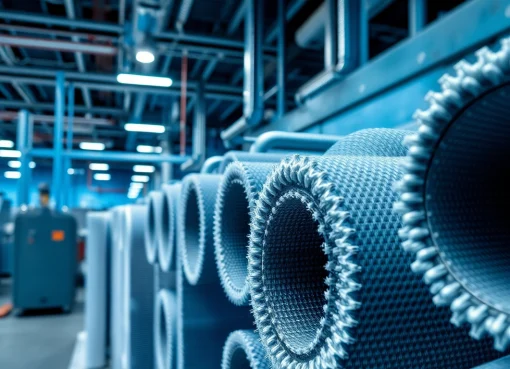3 Essential Thermal Management Materials to Optimize Electronics Performance
Understanding Thermal Management Materials
What are Thermal Management Materials?
Thermal management materials are specialized materials designed to control the heat produced by electronic devices and systems. These materials play a crucial role in ensuring the reliability and performance of electronics by effectively dissipating or insulating heat. With the rapid advancement of technology, devices are miniaturized and packed with increasingly powerful components that generate significant amounts of heat. Without proper thermal management, these devices can encounter overheating issues, leading to reduced performance or even component failure. For a comprehensive overview of the different types of thermal management materials, understanding their types and applications is essential.
The Science Behind Heat Dissipation
Heat dissipation occurs through several mechanisms: conduction, convection, and radiation. Conduction refers to heat transfer through materials, with metals exhibiting high conductivity. In contrast, insulating materials resist heat transfer. Convection involves the movement of fluids that carry heat away from a hot surface, while radiation involves the emission of energy in electromagnetic waves, which is especially relevant in high-temperature applications. Understanding these mechanisms allows engineers to choose the right materials for a given application, leading to optimal heat management.
/h3>
Applications of Thermal Management Materials
Thermal management materials are utilized across various industries, from consumer electronics to automotive, aerospace, and industrial applications. In consumer electronics, materials like thermal interface materials (TIMs) are critically used between the heat-generating components and heat sinks. In automotive systems, managing engine heat and battery thermal performance is essential for electric vehicles. Architecture and building materials increasingly use thermal insulation to enhance energy efficiency. The applications are vast, and the choice of material often impacts device performance, life expectancy, and energy efficiency.
Types of Thermal Management Materials
Thermal Interface Materials (TIMs)
Thermal Interface Materials (TIMs) are employed to bridge the gap between heat-generating components and heat sinks. TIMs include materials like thermal grease, pads, and phase change materials that enhance thermal conduction and eliminate air gaps that act as thermal insulators. The efficiency of TIMs can greatly influence the heat transfer performance of a device. Specifications like thermal conductivity (measured in W/mK), thickness, and application method are all critical factors when selecting a TIM.
Phase Change Materials and Their Uses
Phase change materials (PCMs) absorb and release thermal energy during the phase transition between solid and liquid states. These materials are particularly useful in applications that experience fluctuating temperatures, as they can effectively stabilize the thermal environment. PCMs are utilized in electronic enclosures and thermal management systems for batteries and other heat-producing components. By maintaining temperatures within designated thresholds, PCMs help prolong the lifespan and efficiency of electronic systems.
Conductive and Insulative Thermal Materials
Conductive thermal materials, such as metals and certain composites, are employed to facilitate heat dissipation, while insulative materials are crucial for thermal barrier applications. For example, ceramic insulators prevent unwanted heat transfer, ensuring safety and performance stability in various environments. Furthermore, thermal management solutions must balance both conductive and insulative properties, depending on the application’s thermal management needs. In many instances, a combination of both types can be strategically applied to achieve optimal thermal regulation.
Selecting the Right Materials for Your Application
Key Factors to Consider
When choosing thermal management materials, several factors must be taken into account, including thermal conductivity, operating temperature range, compatibility with other materials, mechanical properties, and application-specific requirements. For example, a material that performs well under high thermal conductivity may be needed for high-power electronics, whereas a flexible material might be more appropriate for wearable technologies. Environmental resilience, such as resistance to moisture or chemicals, may also dictate the choice of materials.
Common Material Comparisons
Several materials are frequently compared in terms of thermal performance. For instance, silicon-based thermal greases are popular for their high thermal conductivity and ease of application, while phase change materials offer unique benefits in stable temperature control. Another common comparison is between metal and polymer materials; while metals offer superior conduction, polymers can be more flexible and easier to handle. Such comparisons help engineers and designers make informed decisions based on specific needs and system specifications.
Real-World Examples of Material Implementation
Case studies provide valuable insights into how different thermal management materials are applied across industries. For example, in the aerospace industry, lightweight aluminum heat sinks with high conductivity TIMs are used to manage avionics equipment temperatures effectively. In the automotive sector, silicone-based adhesives serve dual roles as both adhesives and thermal interface materials, ensuring that heat is efficiently managed while maintaining structural integrity. These real-world examples illustrate the importance of tailored thermal solutions to meet diverse engineering challenges.
Best Practices for Using Thermal Management Materials
Installation Tips for Optimal Performance
Proper installation of thermal management materials is critical for achieving maximum performance. For instance, ensuring a clean surface free of dust and oils improves the adhesion and contact area during application. When applying TIMs, it’s essential to follow the manufacturer’s recommendations regarding thickness and coverage area. Additionally, avoiding air bubbles and ensuring even distribution can significantly affect heat transfer efficiency. Consistency in technique is key to maintaining reproducibility and reliability across installations.
Maintenance and Care for Thermal Materials
Maintenance of thermal management systems is essential to ensure long-term reliability. Periodic inspections for signs of wear or degradation in thermal materials can prevent unforeseen failures. For instance, in high-vibration environments, re-checking the integrity of thermal interface layers may be necessary. Additionally, cleaning protocols must be established to avoid buildup that might impede thermal performance. Understanding the lifespan and performance metrics of the materials in use ensures proactive management and optimal device efficiency.
Testing and Measuring Effectiveness
To validate the performance of thermal management materials, rigorous testing and measurement techniques are employed. Thermal imaging cameras and heat flux sensors are used to assess performance under varying operating conditions. Additionally, metrics such as thermal resistance can be quantified, allowing for comparison with theoretical expectations. Implementing simulation tools can also help predict performance prior to physical testing, providing valuable insights into heat distribution and management strategies.
Future Trends in Thermal Management Solutions
Innovations in Material Science
Emerging technologies in nanomaterials and composites present opportunities for enhanced thermal performance. Researchers are developing materials with tailored thermal properties, including advanced polymers and engineered metals that leverage nanostructures for improved heat dissipation. Innovations like graphene and carbon nanotube composites demonstrate significant promise for revolutionizing thermal management applications, particularly in high-performance computing and miniature electronics.
Emerging Applications in Technology
As technology evolves, the need for effective thermal management grows more critical. The rise of the Internet of Things (IoT), electric vehicles, and advanced computing technologies demands novel thermal solutions. For instance, 5G technology requires stricter thermal controls for more compact hardware structures. Similarly, innovations in battery technology for electric vehicles necessitate advanced thermal management systems to maintain optimal temperature ranges during charging and discharging cycles.
Environmental Considerations and Sustainability
With increased awareness of environmental issues, the thermal management sector is embracing sustainability. Eco-friendly materials and recyclable thermal solutions are gaining traction to minimize waste and the carbon footprint of production. The development of biodegradable thermal interface materials and energy-efficient manufacturing processes aligns with the broader goals of sustainability in technology. Such initiatives contribute to not only better device performance but also environmental responsibility.



Leave a Comment